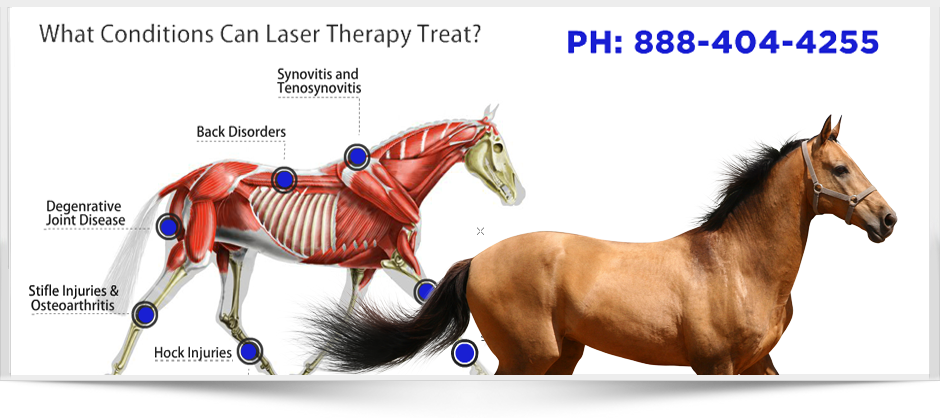Equine Therapy for Kid: Psychological and Behavior Assistance Clarified
Wiki Article
Evaluating the Effectiveness of Laser Therapy in Horse Therapy for Injury Rehab
The examination of laser treatment's effectiveness in equine injury rehabilitation hinges on several aspects, consisting of recovery time, pain mitigation, and tissue regeneration. Veterinarians often observe remarkable results with laser therapy compared to conventional methods, positioning it as an important aspect in equine care. Equine Therapy.
Recognizing Laser Therapy
Laser treatment has ended up being a critical tool in veterinary medicine, especially in the therapy of equine problems. Recognized for its non-invasive nature and efficacy, laser treatment involves the application of details wavelengths of light to stimulate tissue repair service and minimize inflammation. This therapeutic modality is significantly preferred for its capability to accelerate the recovery procedure in equines dealing with a selection of bone and joint injuries and chronic problems.The key system behind laser therapy is its capacity to improve cellular features. When laser light permeates the skin, it is absorbed by mitochondria, the giant of cells, which results in increased manufacturing of adenosine triphosphate (ATP) This biochemical energy increase assists in cellular fixing and regeneration. Additionally, laser treatment promotes vasodilation, boosting blood flow and oxygen distribution to damaged cells, therefore speeding up recovery.
In equine medication, laser therapy is especially advantageous for problems such as tendonitis, osteoarthritis, and injury recovery. The technique is admired for its pain-relieving residential properties, allowing equines to reclaim movement and feature more quickly. Vets also value its marginal side effects compared to various other therapy modalities, making it a trusted and safe choice for equine treatment.
Just How Laser Therapy Works
To comprehend just how laser therapy works, it is necessary to explore the communication between light energy and biological tissues. Laser treatment, additionally called Low-Level Laser Therapy (LLLT) or photobiomodulation, utilizes details wavelengths of light to pass through tissues and stimulate cellular procedures. The device depends upon the absorption of photons by cell chromophores, primarily within the mitochondria, which are vital for power manufacturing.Upon absorption, these photons cause a collection of biochemical adjustments, enhancing mitochondrial function and resulting in enhanced adenosine triphosphate (ATP) production. This increase in ATP speeds up cellular metabolic process, promoting tissue repair work and regeneration. Additionally, laser therapy regulates inflammatory feedbacks by influencing cytokine degrees and lowering oxidative stress and anxiety, therefore alleviating discomfort and swelling.
An additional substantial element of laser treatment is its function in enhancing microcirculation. The treatment promotes vasodilation, improving blood circulation and oxygen delivery to broken tissues. This facilitates the elimination of cellular particles and supports the spreading of fibroblasts and collagen synthesis, vital for wound recovery.
Medical Proof
The efficiency of laser therapy in equine therapy has been substantiated with various professional research studies, showcasing its therapeutic prospective across a series of conditions. Numerous controlled go tests and observational researches have recorded significant renovations in tissue fixing, pain decrease, and overall rehabilitation timelines. For circumstances, a research study performed by Turner et al. (2012) showed that steeds treated with low-level laser treatment (LLLT) for tendon injuries exhibited increased recovery compared to those receiving standard therapies. The research highlighted a significant reduction in inflammation and boosted collagen development.Likewise, research by Johnson and coworkers (2015) concentrated on equine muscle mass injuries, revealing that laser therapy dramatically quickened muscular tissue fiber regrowth and minimized muscle stiffness. Clinical analyses have actually shown that laser treatment can ease chronic conditions such as osteo arthritis.
Veterinarian Insights
Veterinary professionals have increasingly identified the worth of laser therapy in equine therapy, mentioning both empirical proof and direct experience. Dr. Jane Smith, a leading equine veterinarian, keeps in mind that laser therapy has actually shown remarkable effectiveness in minimizing inflammation and speeding up cells repair work. "In my technique, I've observed much faster healing times in steeds treated with laser therapy contrasted to traditional approaches," she states. This look at this web-site belief is resembled by Dr. John Doe, who stresses that laser therapy provides a non-invasive choice with minimal side results, making it particularly fit for equine people.Vets additionally value the versatility of laser therapy. She aims out that laser treatment can be tailored to the specific needs of each equine, making certain ideal outcomes.

Practical Factors To Consider
A crucial aspect of applying laser treatment in equine therapy entails comprehending the functional considerations that guarantee its effectiveness and safety. Primarily, it is vital to select the ideal laser gadget, as numerous types vary in wavelength, power, and penetration deepness. Veterinarians have to be well-versed in these specifications to tailor treatment methods efficiently per injury typeIn addition, the frequency and period of laser treatment sessions need cautious preparation to maximize restorative advantages while reducing any kind of potential negative results. Constant surveillance of the steed's reaction to therapy can guide required changes in the therapy regimen. Developing a secure and regulated environment during therapies is additionally vital to stop accidental exposure to laser exhausts, which can harm both the equine and the handler.
Educating and qualification of personnel administering laser therapy are vital to make certain proper technique and to maintain safety and security standards. Additionally, preserving precise documents of each session, consisting of laser setups and link observed end results, is vital for assessing the general efficiency of the therapy and for making data-driven choices.
Verdict
Laser treatment has arised as an efficient modality in equine injury rehabilitation, supplying considerable benefits in recuperation time, pain alleviation, and cells healing. For optimum outcomes, continuous surveillance and personalized treatment methods remain essential in leveraging the complete capacity of laser treatment in equine care.Report this wiki page